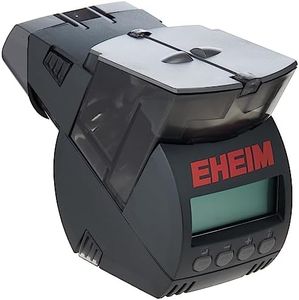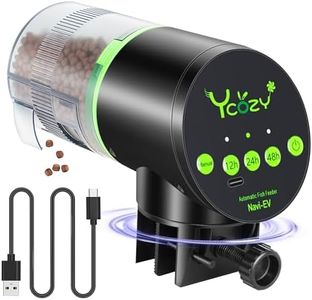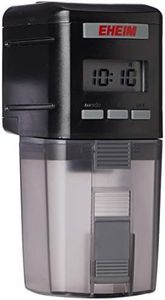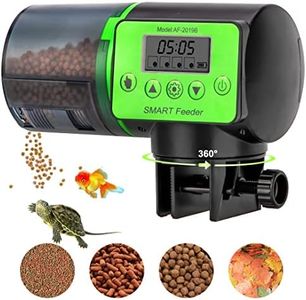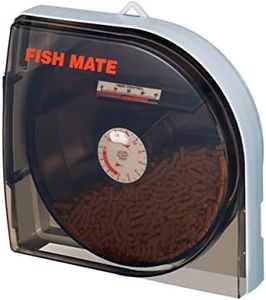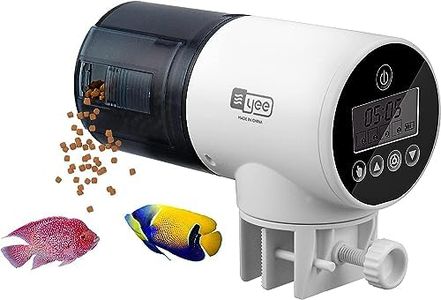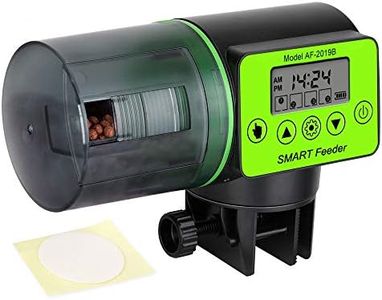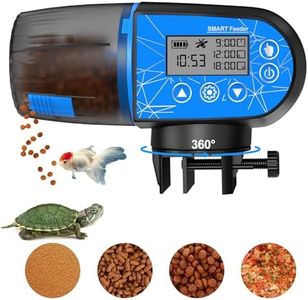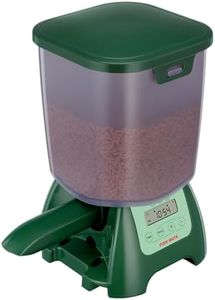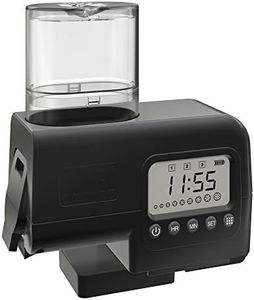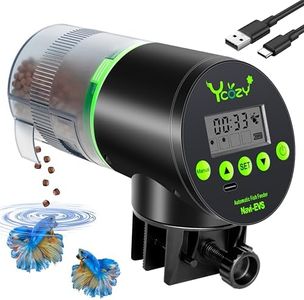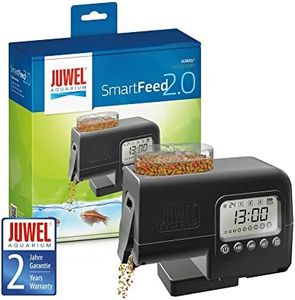We Use CookiesWe use cookies to enhance the security, performance,
functionality and for analytical and promotional activities. By continuing to browse this site you
are agreeing to our privacy policy
10 Best Auto Fish Feeders
From leading brands and best sellers available on the web.Buying Guide for the Best Auto Fish Feeders
Choosing an auto-fish-feeder is about keeping your aquatic pets fed regularly, even when you’re away or have a busy schedule. A good feeder will help you stick to their feeding routine, prevent overfeeding or underfeeding, and provide peace of mind. As you look for a feeder, think about the number of fish, tank size, types of food you use, and how often you want to refill the feeder.Feeding CapacityFeeding capacity refers to how much food the feeder can hold. This is important because it determines how long the feeder can operate before you need to refill it. Feeders with small capacities might need daily or every few days refills, while larger ones can last up to a couple of weeks or more. Smaller tanks with few fish or occasional use can get by with lower capacity, but if you have many fish or plan to be away for extended periods, look for higher capacity models.
Food Type CompatibilityFish feeders can usually dispense flakes, pellets, or granulated food, but not all feeders work with every type. Some feeders can clog if you use sticky flakes, while others handle pellets or granules better. Think about the type of food your fish eat most often. If you only use one type, make sure the feeder is designed for it. If you use a mix, look for feeders that state they’re compatible with multiple food types.
Programmable Feeding ScheduleThis spec tells you how flexible and precise you can be with feeding times. Some feeders offer simple daily feeding, others let you set multiple feedings per day, and some even control portion size per feeding. For basic needs, daily timers are enough. If you have species that require more frequent or precise feeding, choose a feeder with more advanced, customizable schedules. Your fish’s specific dietary habits and your routine will help you decide.
Portion ControlPortion control means the feeder can dispense a specific amount of food at each feeding. This is crucial because overfeeding can pollute the water and harm fish, while underfeeding leaves them hungry. Look for feeders with adjustable portion sizes if you want more control, especially for tanks with a mix of species. Simpler feeders may only dispense fixed amounts, which is fine for less sensitive species or basic setups.
Power SourceAuto-fish-feeders are usually powered by batteries, electricity, or both. Battery-run feeders are convenient and safe from power outages, but you have to remember to check or replace batteries. Plug-in models work nonstop but might stop during outages. Some offer a combination for reliability. Consider how steady your home power supply is and how much you want to check in on the feeder when you make your choice.
Mounting OptionsMounting options refer to how and where the feeder attaches to your aquarium. Some feeders clamp to the tank’s edge, while others can simply sit on a flat surface above the tank. Consider the space around your aquarium, the shape and size of your tank, and if you want a semi-permanent setup. If you have a tank cover or tight space, look for flexible mounting designs.
Moisture ProtectionMoisture protection helps prevent fish food from clumping inside the feeder due to humidity from the tank. Feeder models may include seals, ventilation, or special designs to keep food dry. If your tank is open or you live in a humid area, moisture protection is crucial to ensure consistent feeding and to prevent food spoilage.
